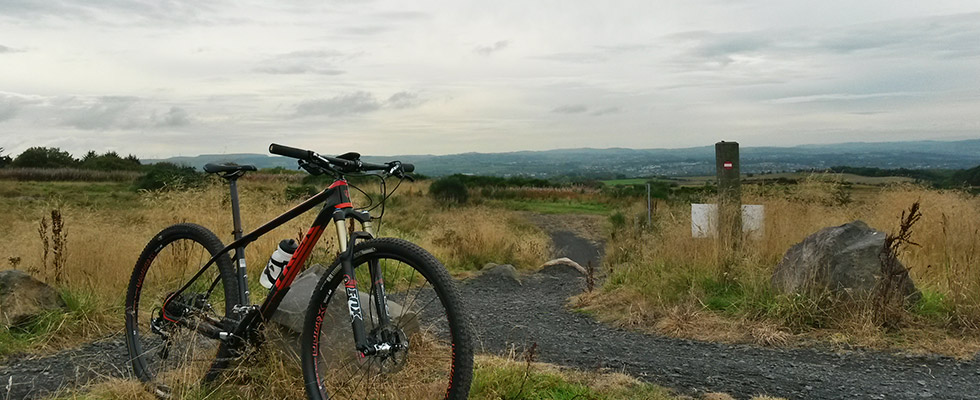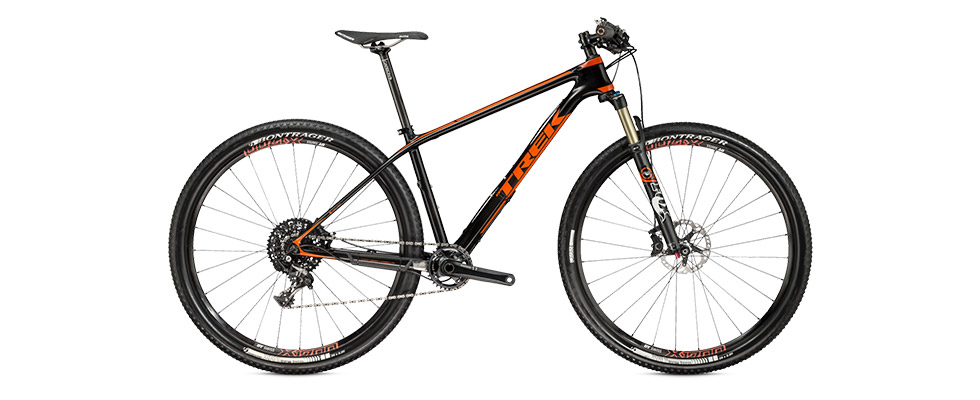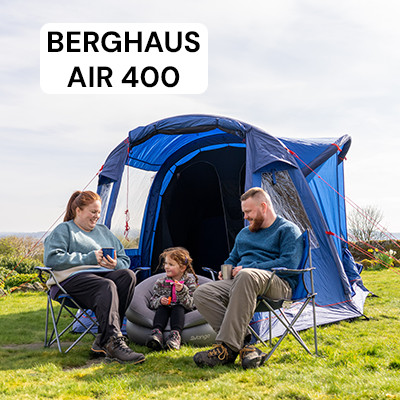Tools of the trails: Trek Superfly 9.8 SL
In the first of his series covering bikes, components, accessories and products to help your mountain bike riding, Derek Shanks provides the lowdown on his trusty race steed – his Trek Superfly 9.8 SL.
I’m lucky enough to have two fantastic race bikes for my cross-country (XC) and endurance mountain bike racing. They’re both Trek Superfly models – one a hardtail (that’s suspension just at the front) and the other a full-suspension, with a front fork and rear shock. For you fellow bike geeks out there, here are the details of my Trek Superfly 9.8 SL hardtail.
Here she is (yes, obviously she’s a “she”, but no she doesn’t have a name . . . well not that I’m admitting). This is taken up at Cathkin Braes but the remaining photos were taken indoors. She obviously does not live in the garage, but inside the house where it’s warm, dry and cosy!
This is a pretty standard build (as opposed to my custom “Project One” full suspension Superfly). Although there are a few changes I’ve made from the stock bike... It’s a 2015 model and Trek have now announced their new 2016 range. The Superfly is still in the range, but you’d probably need to go for a Procaliber to find the equivalent spec for a race bike.
So, what makes this an XC race bike? Well, first of all, it’s lightweight. The “SL” stands for “Super Light” – it’s a carbon frame along with carbon handlebars and a carbon seatpost. Then there’s the geometry. I’ll not get into all the details of the geometry here, but typically, an XC race bike has a steeper head angle (69.3 degrees for this bike). The steeper the head angle, the more aggressive the bike is for accelerating and the better it will climb. The downside of a steep head angle is that it can be trickier to handle on steep descents, but I find Trek’s clever G2 geometry and 29 inch wheels more than make up for that. There’s always a compromise and this is a thoroughbred race bike so you do want a more aggressive geometry.
Another thing that defines an XC bike is less suspension travel. Although XC courses are getting more and more technical every year, we’d generally rather sacrifice extra suspension travel for weight. Long gone are flat, easy, non-technical XC courses. If anyone reading this thinks we don’t ride steep technical descents just because of our steep head angles and 100mm of suspension travel, come try some of the Scottish XC courses from last year like Badaguish! In my case, the suspension is a Fox Factory Series 32 fork with CTD (Climb/Trail/Descend) and 100mm of travel:
The CTD function lets me lockout the suspension for powerful start sprints and smoother climbs, and in XC racing this is really helped by having a remote for this:
Here you’ll also see the ESI Foam Chunky grips I use. They’re incredibly lightweight but comfortable and shock-absorbing. Also in the handlebar department, it’s worth pointing out their width. In the old days of XC racing, flat, narrow handlebars were all the rage, but you’ll hear enduro and downhill riders running incredibly wide bars these days (along with short stems). This aids handling in corners. I like to go somewhere in between. I’m running 690mm wide bars with 5 degrees rise, and a 90mm stem. This gives me a good compromise of an aggressive position for climbing, but enough width to aid handling in corners while still being able to squeeze through the tight trees on some courses!
I have Shimano XT hydraulic disc brakes and have recently changed the drivetrain to Shimano XTR 1 x 11. I’m currently running a 34 tooth chainring but would change this up or down in size depending on how hilly (or not) the course is.
XTR Race pedals and XTR M9000 Race crankset, rear derailleur and shifter makes this lightweight and gives super smooth shifting. The shadow-plus clutch system on the rear derailleur coupled with the tooth pattern on the chainring provides excellent chain retention even on the bumpy stuff!
The wheels are Bontrager RXL 29 inch and I generally use Bontrager XR1 tyres for most races, unless it’s a bit muddy – I then switch to XR2 tyres as you’ll see here. I vary between a 2.2 inch wide tyre and a 2.0 inch, depending again on the course. Sometimes a 2.2 up front and a 2.0 at the rear. Tyre pressures are a very personal thing but I run tubeless, using Bontrager’s fantastic and easy to set up TLR system, which allows you to go lower for extra grip. I might go as low as 20 PSI at the front if it’s really wet and slippy. I find the Bontrager tyres incredible – I’ve done a really rough 75km mountain bike marathon on XR1s – a tyre most people would never consider in a long, wild endurance race for fear of slashing it on the rough rocks of wild Scottish hills. But it survived all that rough treatment despite being really lightweight.
So, would I change anything on this bike? Well, as racers, we’re always looking for the latest upgrade to make our bikes lighter or faster. The bike currently weighs about 9.5kg, including pedals, when running XR1 tyres. A lot of people quote bike weights without pedals – I have no idea why, since you can’t ride a bike without pedals! 9.5kg is pretty good and it climbs extremely quickly given the light weight, but I’m sure I could get it under 9kg and that’s where I’d maybe make some upgrades in future...
I’d change the Shimano XT brakes to XTR, matching the drivetrain. I’d upgrade the Bontrager RXL wheels to their XXX wheels – rotating mass is the best place to save weight. There are a couple of components that are not carbon as it comes from the factory – the saddle and the stem. There’s not a lot to be saved in those departments so they are probably the last upgrades I would make.
Despite dreaming of future upgrades, I absolutely love this bike. My full suspension is still my choice for rough, technical, and in particular rocky courses. However, for anything that involves a lot of climbing and isn’t too rough on the descents, I’ll always go with the hardtail. It climbs so well and is actually loads of fun on the way back down too! Keen to start mountain biking on the trails? Check out my tips by clicking here.












